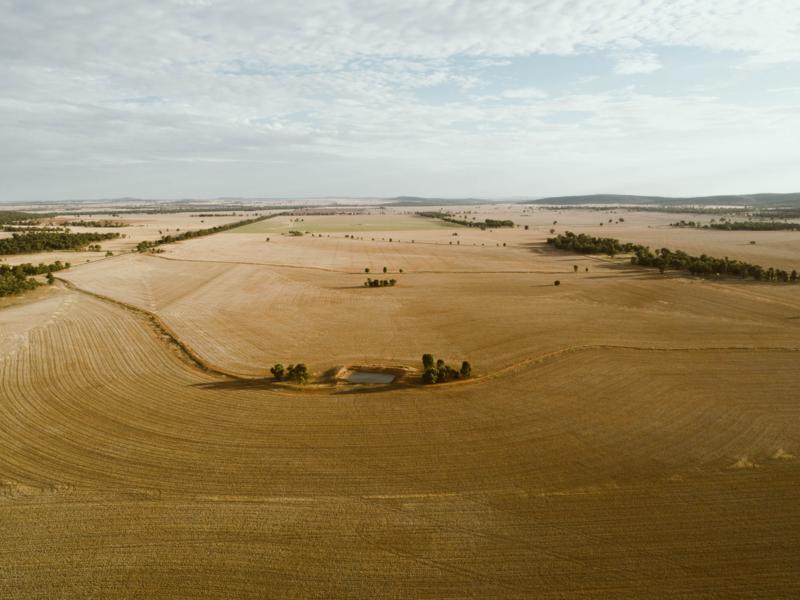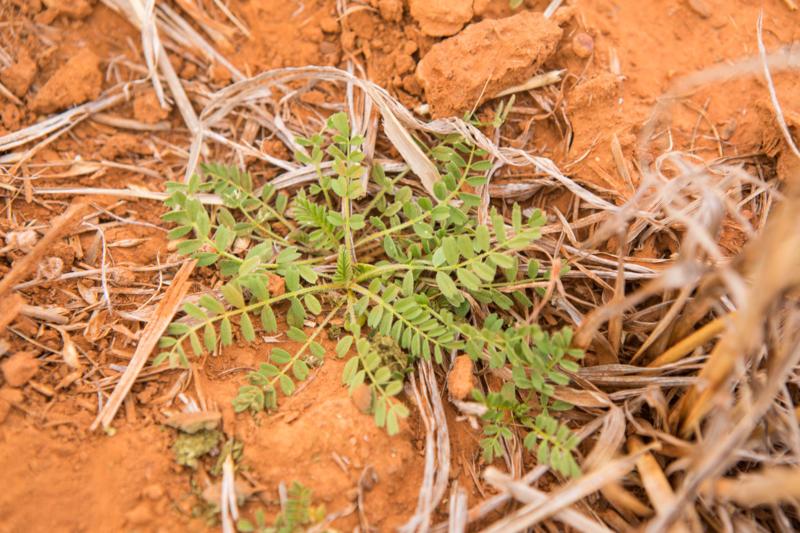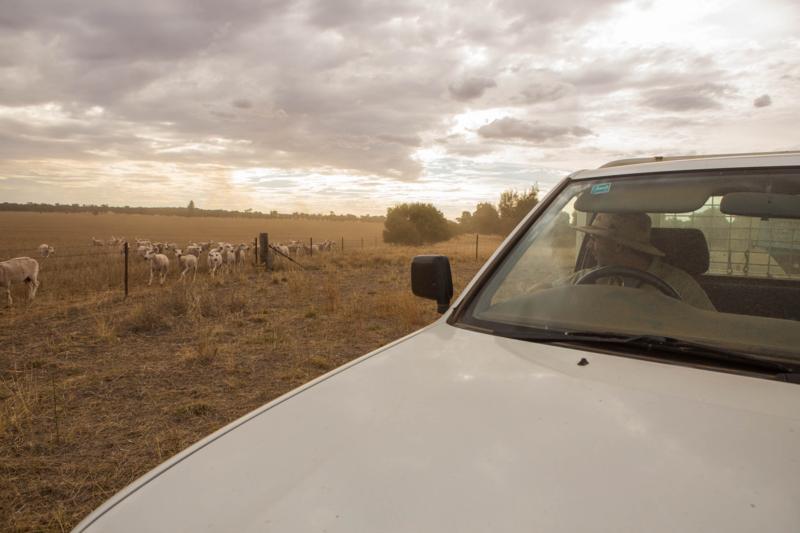There have been O’Hares farming in southern NSW for almost a century. They know one thing is as certain as drought and flooding rains – and that’s the need to constantly change to be successful. It was not resting on their laurels that led the current O’Hares, Mike and Velia, to win NSW Farmer of the Year 2017.
NSW Farmers’ president Derek Schoen was one of the judges for the award, and says the outstanding reason for the O’Hares’ win was their continuing work in advancing agriculture over a long period of time.
 Mike and Velia O’Hare rotate their crops with two years of legumes followed by canola and wheat.
Mike and Velia O’Hare rotate their crops with two years of legumes followed by canola and wheat.
“We look at the most recent innovation, but this family has been innovating in agriculture for such a long time and hasn’t really been recognised,” he says. “This is immediate and past recognition.”
Derek says the O’Hares have been heavily involved in trial work to develop new wheat cultivars for more than 50 years at their property, Greendale, at Beckom in the Riverina.
“A lot of trial work for Beckom wheat was done here,” he says – and in fact, the variety was named in recognition of the family’s efforts. Most recently, they have had success planting a little-known legume called biserrula.
*READ more about grain cropping clever on-site silo storage and how this is helping farmers in Gilgandra increase profits and sustainability
 Biserrula plant.
Biserrula plant.
The O’Hares produce wheat, canola and prime lamb at Greendale. Although their forebears first farmed in the area in the 1920s, Mike’s father Phil bought their current landholding in 1963. It was later extended to the current property’s 2,200 hectares.
DISASTROUS MILLENNIUM DROUGHT
As was the case for many, their farm suffered through the devastating Millennium drought from 2001 to 2009, which had severe implications for almost all of the southern cropping zones. When the drought ravaged his subterranean clover, Mike looked about for alternatives and decided to take a chance with the hardy Mediterranean legume, biserrula. He planted it in 2009 and was overwhelmed by its success.
The O’Hares rotate their crops with two years of legumes followed by canola and wheat. Their 1,600 ewes also graze in rotation and assist with weed management in growing areas.
The couple has also contributed to the biodiversity of the area by continuing the native regeneration begun by Mike’s father, and have created a wildlife corridor by planting trees along waterways.
RELATED ARTICLES:
- Native vegetation mapping controversy
- Native vegetation laws - the good, the bad and the farmers making it work
 The O’Hares run 1,600 ewes on Greendale at Beckom.
The O’Hares run 1,600 ewes on Greendale at Beckom.
Attending research events is really important. In February, I spent two days at the Grains Research & Development Corporation update in Wagga. I’m also a member of FarmLink, a local grower group that puts you in touch with the latest research in your own patch. I would also suggest subscribing to the rural publications because you’ve got to keep your ear to the ground.
2. BE PREPARED TO EXPERIMENT AND VISIT FARMS
We’ve always run crop pasture rotations, traditionally using subterranean clover and lucerne. We weren’t happy with how the sub clover worked in our area, so I was always looking for new varieties and legumes.
Almost 20 years ago, I found out about a hard-seeded pasture legume called biserrula, an extremely hardy Mediterranean plant. At first I couldn’t find anyone else in NSW who had grown or played with it.
Then I found Dr Belinda Hackney who was researching it in conjunction with people in Western Australia. Once I met her and saw how it was growing, I began to do some research work at home and it went from there.
The ewes graze in rotation, and assist in weed management.
3. DEVELOP AWARENESS OF CROPS AND LIVESTOCK THAT CAN MITIGATE CLIMATIC CONDITIONS
We started growing biserrula in 2009. The initial establishment was similar to other crops and we took a chance to use a new species. The fact it survived a pretty tough year showed it was a hardy little crop and can survive variable climatic conditions.
It can hang on and handle those tougher conditions when traditional sub clover will die. If it’s alive when the rain does come, it can actually produce something.
The other reason we were keen on something like this was we were after something we could actually grow and harvest on our farm at the end of the Millennium drought. It’s more of a challenge than other clovers, but it’s not a lot of trouble with conventional machinery and you get seed on your own farm.
Harvesting your own seed is much cheaper and we haven’t had to replant since then. Biserrula yields seed of about 50-500kg/ha. I have a few other legumes planted, such as bladder clover (100-800kg/ha) and gland clover (100-300kg/ha), which are also really tough. Replanting has saved us tens of thousands of dollars. This system also keeps the soil healthy and uses minimal herbicide.
*Central West cattle farmer, Angus Atkinson saw his winter forage crops fail for the first time. But he says the story isn’t all bad. READ HERE.
Dog Pippa comes along for the ride as Mike heads to the paddock to give the sheep their supplementary feed.
4. BE OPEN TO CHANGE AND INNOVATION
Farming is constantly changing, whether through technologies or varieties, so you’ve got to keep an eye out. Some of the most significant changes were back in the 1970s when we first started growing semi-dwarf wheats that gave us higher yields.
Then came the introduction of canola in the late 1970s. Another shift came with direct-drilling crops instead of cultivating several times beforehand. Technology has always been changing the way we do things.
Of course there are more tech-based developments now like auto-steer and computer-controlled machinery, but I’m not a real tech head – I need someone to prompt me with some of those things.
Farming is not something you can just look at and think, oh well we can do that for the next 10 years. It’s constantly evolving.
RELATED ARTICLE: “Top trends in farm machinery”
5. LOOK FOR MORE EFFICIENT WAYS OF WORKING
Farming is something I’ve always been interested in and when you’re interested you’re always striving to do things better. You should always be determined to improve productivity and efficiency by examining the business and looking from the outside back in. To be successful, you have to be serious about it.
*Read more about innovative farmers in NSW, like Olympia Yarger from Canberra, who’s feeding food waste to maggots and turning it into livestock feed.
BISERRULA FAST FACTS
PRODUCTIVITY
In the recent drought years, biserrula frequently produced 2.5 to 3 times more herbage than subterranean clover across a range of soil and climatic zones.
DROUGHT TOLERANT
Biserrula will grow successfully in areas with an average annual rainfall of 325-800mm, and has grown and set seed where growing season rainfall has been as low as 90mm.
SEED COUNT
Seed pods contain about 15-20 seeds depending on the variety and season, and there are approximately 1,000,000 seeds
per kilogram.